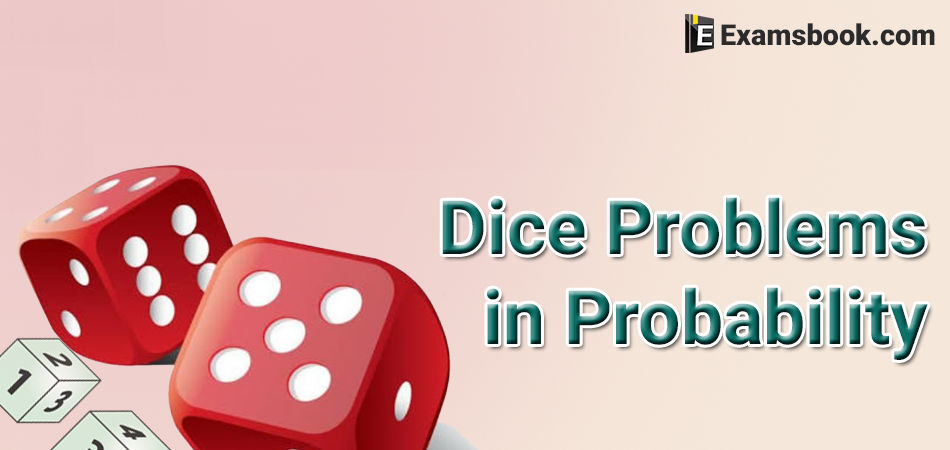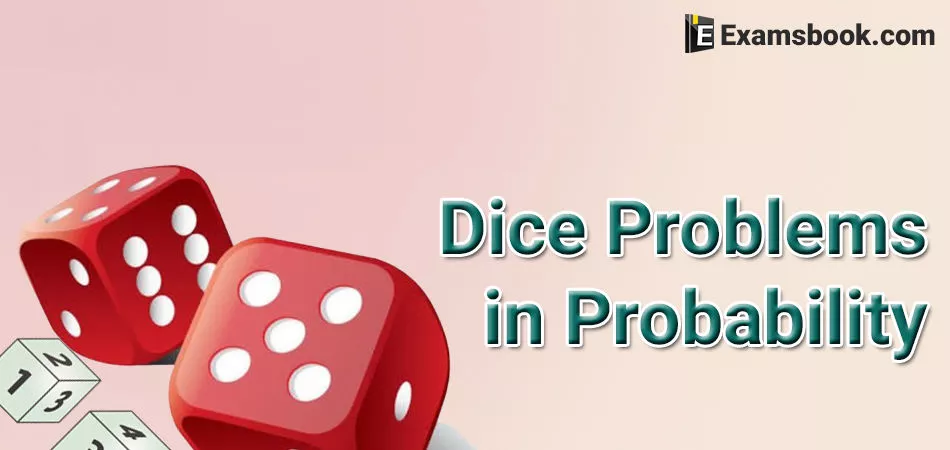


Q.13. getting an even number as the sum
(A) 1/8
(B) 1/2
(C) 1/9
(D) 1/10
getting an even number as the sum:
Let E10 = event of getting an even number as the sum. The events of an even number as the sum will be E10 = [(1, 1), (1, 3), (1, 5), (2, 2), (2, 4), (2, 6), (3, 3), (3, 1), (3, 5), (4, 4), (4, 2), (4, 6), (5, 1), (5, 3), (5, 5), (6, 2), (6, 4), (6, 6)] = 18
Therefore, probability of getting ‘an even number as the sum
= 18/36
= 1/2
Q.14. Getting a doublet
(A) 2/3
(B) 4/8
(C) 1/6
(D) 4/8
getting a doublet: Let E4 = event of getting a doublet. The number which doublet will be E4 = [(1, 1), (2, 2), (3, 3), (4, 4), (5, 5), (6, 6)] = 6
Therefore, probability of getting ‘a doublet’
= 6/36
= 1/6
Q.15. Getting a prime number as the sum
(A) 2/12
(B) 3/12
(C) 5/12
(D) 12/5
getting a prime number as the sum:
Let E11 = event of getting a prime number as the sum. The events of a prime number as the sum will be E11 = [(1, 1), (1, 2), (1, 4), (1, 6), (2, 1), (2, 3), (2, 5), (3, 2), (3, 4), (4, 1), (4, 3), (5, 2), (5, 6), (6, 1), (6, 5)] = 15
Therefore, probability of getting ‘a prime number as the sum’
= 15/36
= 5/12
Q.16. Getting a sum of 8
(A) 6/36
(B) 8/56
(C) 7/40
(D) 5/36
getting a sum of 8:
Let E5 = event of getting a sum of 8. The number which is a sum of 8 will be E5 = [(2, 6), (3, 5), (4, 4), (5, 3), (6, 2)] = 5
Therefore, probability of getting ‘a sum of 8’
= 5/36
Q.17. Getting a doublet of even numbers
(A) 1/18
(B) 1/16
(C) 1/10
(D) 1/12
getting a prime number as the sum:
Let E11 = event of getting a prime number as the sum. The events of a prime number as the sum will be E11 = [(1, 1), (1, 2), (1, 4), (1, 6), (2, 1), (2, 3), (2, 5), (3, 2), (3, 4), (4, 1), (4, 3), (5, 2), (5, 6), (6, 1), (6, 5)] = 15
Therefore, probability of getting ‘a prime number as the sum’
= 15/36
= 5/12
Q.18. Getting sum divisible by 5
(A) 8/36
(B) 6/36
(C) 5/36
(D) 7/36
getting sum divisible by 5:
Let E6 = event of getting sum divisible by 5. The number whose sum divisible by 5 will be E6 = [(1, 4), (2, 3), (3, 2), (4, 1), (4, 6), (5, 5), (6, 4)] = 7
Therefore, probability of getting ‘sum divisible by 5’
= 7/36
Q.19. Getting a multiple of 2 on one die and a multiple of 3 on the other die
(A) 11/36
(B) 12/36
(C) 10/54
(D) 12/54
getting a multiple of 2 on one die and a multiple of 3 on the other die:
Let E13 = event of getting a multiple of 2 on one die and a multiple of 3 on the other die. The events of a multiple of 2 on one die and a multiple of 3 on the other die will be E13 = [(2, 3), (2, 6), (3, 2), (3, 4), (3, 6), (4, 3), (4, 6), (6, 2), (6, 3), (6, 4), (6, 6)] = 11
Therefore, probability of getting ‘a multiple of 2 on one die and a multiple of 3 on the other die’
= 11/36
Feel free and ask me in the comment section related dice problems in probability if you face any problem.
Get the Examsbook Prep App Today